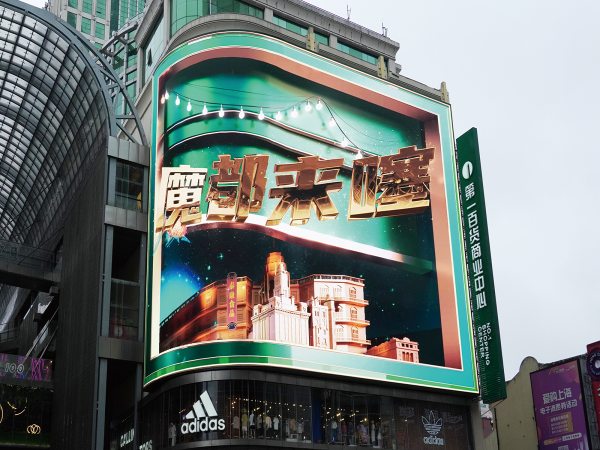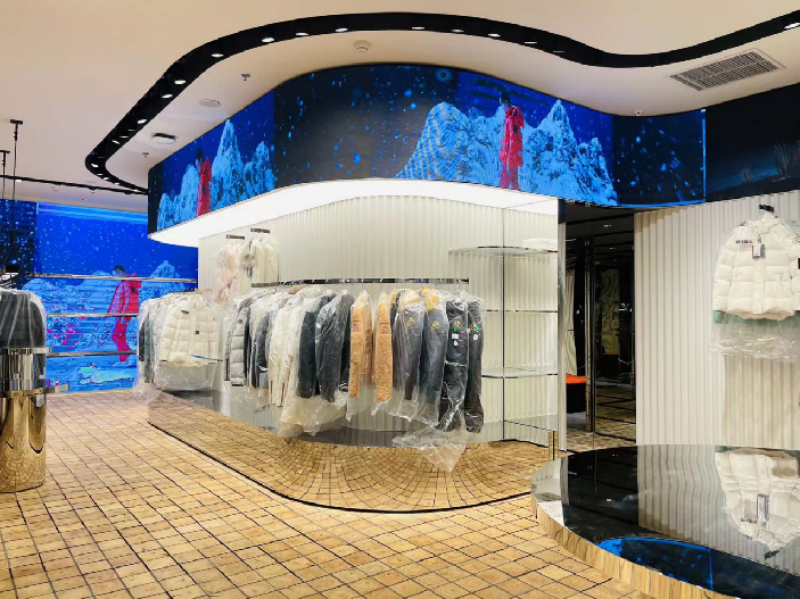Sansi LED: Sustainable LED Lighting and Integrated LED Display
Delivering premium and professional LED Display, LED Lighting, Smart City Integration solutions, trusted by over 60,000 companies worldwide everyday. From industrial lighting to commercial lighting, from outdoor advertising to XR & VR production, Sansi LED greatly improves the quality and sustainability of your business with 30 years of expert experiences.
LED curved displays have garnered significant attention due to their unique visual effects and wide range of applications. This display technology not only enhances visual experiences but also brings revolutionary changes across various industries.
The Structure and Principles of LED Curved Displays
LED curved displays are composed of thousands of tiny light-emitting diodes (LEDs) meticulously arranged on a curved panel. Unlike traditional flat displays, curved screens offer a broader viewing angle and a superior immersive visual experience. The primary principle behind these displays lies in the high brightness and color gamut of LEDs, enabling the curved structure to reflect and transmit light, producing vibrant images.
The curvature of curved displays can be customized to suit specific needs, providing greater design flexibility. Whether for indoor or outdoor use, these displays can adapt to various environments, delivering eye-catching visual effects.

The Driving Forces Behind the Technology
The development of LED curved displays is propelled by several key technological advancements:
Advancements in LED Technology: Improvements in LED manufacturing processes have significantly enhanced brightness, color consistency, and lifespan. This progress has greatly improved the image quality of curved displays.
Curved Display Technology: The design of curved displays relies on high-precision curvature technology, ensuring image quality remains optimal across different radii.
Advanced Driving and Control Systems: Modern LED curved displays are typically equipped with sophisticated driving chips and control systems that can process data in real time, ensuring stable display performance.
Smart Management: With the rise of Internet of Things (IoT) technology, curved displays can implement remote monitoring and management, allowing real-time adjustments to content and brightness for optimal viewing conditions.
Applications Across Various Fields
Outdoor Advertising
In urban settings, LED curved displays are frequently used as large advertising billboards. Their unique curve attracts the attention of passersby, effectively increasing ad visibility. At night, the high brightness of LEDs makes ads even more striking, providing advertisers with a higher return on investment.
Indoor Exhibitions
In exhibitions and museums, LED curved displays offer visitors a new visual experience. Through highly customizable curved designs, exhibition organizers can effectively communicate information, increasing the appeal of exhibits and enhancing interactivity, thus creating immersive experiences.

Entertainment Industry
During concerts and large events, LED curved displays have become essential visual elements. Their flexible forms and high-quality display capabilities allow them to seamlessly integrate with stage performances, enhancing audience experiences. These displays can present dynamic effects and interactive content, surprising attendees.
Sports Venues
In sports arenas, LED curved displays are used for real-time match broadcasts, updates on game status, and advertisements. Due to their wide viewing angles, all spectators can enjoy clear images, ultimately enhancing the viewing experience.
As technology continues to evolve, the future of LED curved displays is filled with infinite possibilities. We anticipate innovations in higher resolutions, thinner designs, and more intelligent applications. Furthermore, the combination of augmented reality (AR) and virtual reality (VR) technologies with LED curved displays may provide users with richer interactive experiences.
